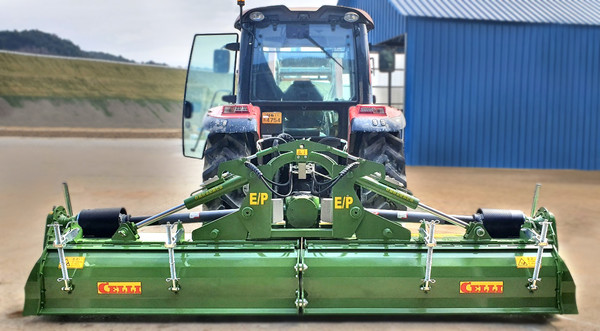
E/P rotary tiller by Celli, light in the rice fields
A new solution for tilling rice fields is on the market, made by Celli. It’s called E/P and it expands the range of rotary tillers offered by the company from Forlì. This folding model was developed from the fixed version (E) and designed specifically to operate in rice fields, thanks to a particular processing system patented by the company. Suitable for working with medium-low power tractors (100-120 Hp), the E/P has technical and geometric characteristics that allow it to operate effectively with this type of crop: in particular, the rotor has been completely redesigned, in terms of dimensions, external diameter and quantity of flanges and hoes. But what do these innovations consist of? Let’s start by saying that E/P is an extremely light machine, thanks to the use of high yield strength steels, which make it able to operate even in completely flooded land, such as the rice fields of South Korea, a market that Celli has been serving for decades and for which the machine was initially designed after months of field tests. To obtain this floating characteristic, indispensable for working properly (the machine must not sink), Celli worked on the weight, as well as designing specific shapes (hood and rotor) which give it a very low weight/volume ratio: this, coupled with the correct rotation speed of the rotor, achieved through a single speed gearbox, make it possible to work in the appropriate way. Automations have also been developed that avoid water projecting around the work area, for example through the fans.
Starting from the version designed for the Korean market, Celli designers then thought of suitable variants for the Italian rice fields: like all Celli machines, the E/P is also characterized by extreme versatility, thanks to some technical features (the double flange with interface system) which accommodate rotors of different shapes and sizes, replacing them easily and therefore adapting the machine to different types of work and soil conditions.








